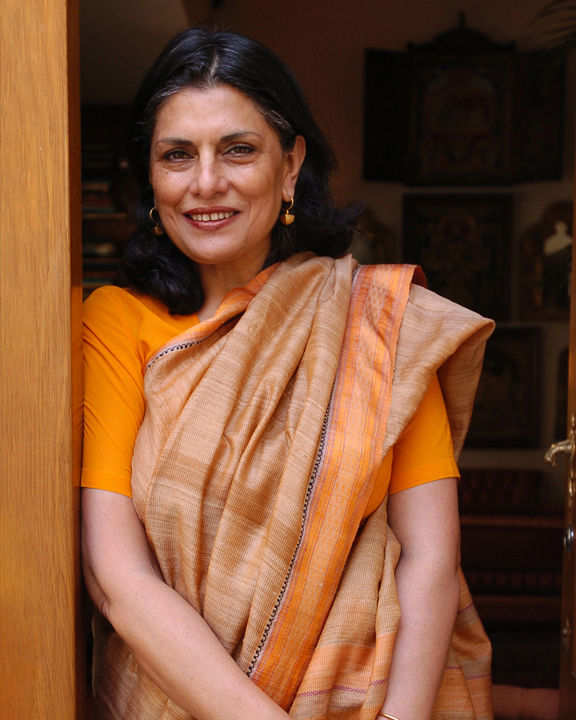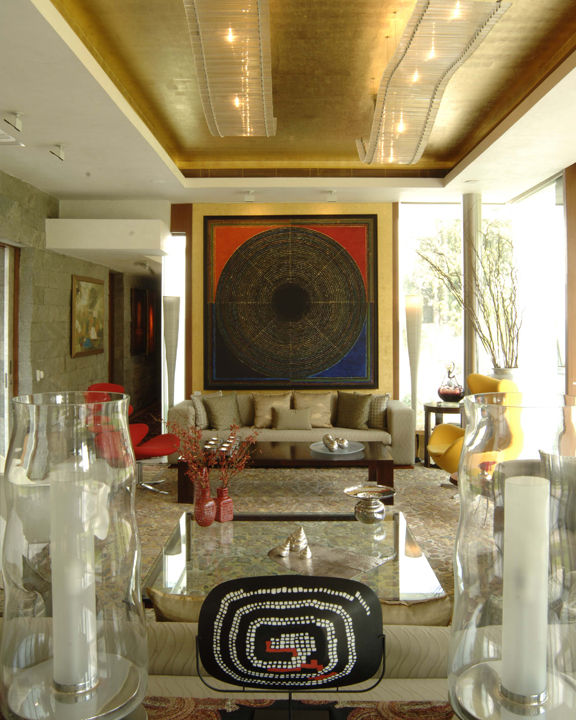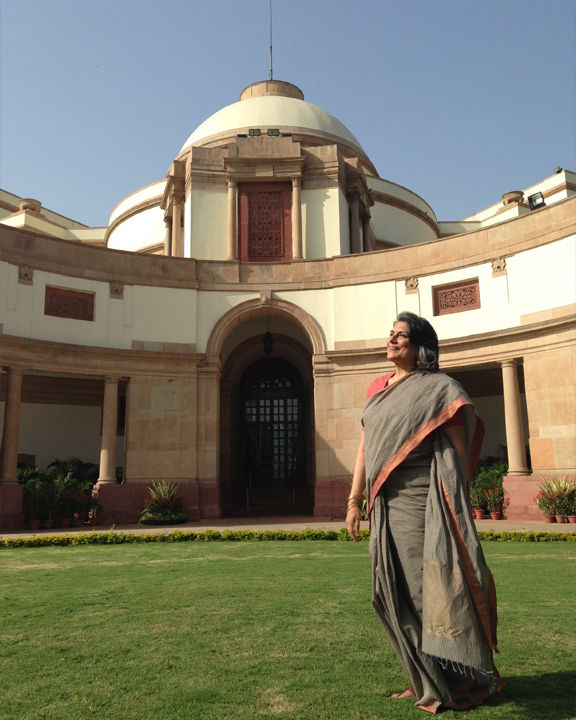A true #DesignDisruptor, Padma Shri awardee and President & Co-Founder of K2India Sunita Kohli charted her own path in the 1970s when interior design was an alien concept in India. From the Parliament Building in Bhutan to exquisitely restoring Lutyens’ icons like Hyderabad House – her iconic projects put Indian aesthetics on the world stage. Her perseverance transcended skepticism to manifest an extraordinary legacy.

Who were your biggest inspirations or role models? How did they influence or motivate you?
In my early years as a furniture manufacturer and an interior designer, that is from 1971 onwards, there were no role models as the discipline of interior design did not seem to exist in India. This was also an age without smart phones and the internet. So, inspiration came from reading about design in books and magazines like Architectural Digest. I had greatly admired the all-white designs of Syrie Maugham who, although untrained in this art, greatly influenced both sides of the Atlantic in the 1920s and ’30s. Moreover, she was the wife of the well-read novelist William Somerset Maugham. Regarding influences, growing up in a city like Lucknow had the most significant impact. One might not have sentiently realised it then, but everything one observed with one’s father—be it architecture, crafts, or even being part of a certain genteel lifestyle, most shaped my design sensibilities.
What accomplishments from your career so far are you most proud of? What projects, designs, or impacts give you the greatest sense of fulfilment and pride?
It’s quite difficult to pinpoint the projects that evoke the most pride, but if one had to choose, I would select designing the Parliament Building in Bhutan ranks high on the list. In the 1980s Bhutanese art, architecture and culture were unknown outside their country. So, this project, the largest in Bhutan at that time was a hugely intellectual and visual exercise. It had to be researched empirically. To name other passion design projects would be the extensive restoration and conservation work that one undertook for Hyderabad House and Rashtrapati Bhavan, both buildings designed by Sir Edwin Lutyens. I also undertook the restoration and conservation of the two bungalows that comprise the Indira Gandhi Memorial Museum, designed by Sir Robert Tor Russell. Perhaps another landmark project for me was the interior design of the British Council Building and Library in Delhi, whose architect was Charles Correa and which was then their largest project in the world. It was inaugurated by the Prince of Wales in 1992. Speaking of projects abroad, the three luxury boats on the Nile I designed for the Oberois are significant, especially the Oberoi Philae Cruiser, which was then considered the finest luxury hotel boat on the Nile. I will always think with fondness of my first hotel project which was for the Oberois in Khajuraho in mid ’70s and The Oberoi in Bhubaneshwar, now rebranded as the Oberoi Trident, in 1982. For this hotel I worked closely with many master weavers and master craftsmen in bronze and stone, notable among them being Raghunath Mohapatra, a sthapati who went on to become a great associate and was later in life awarded the Padma Vibhushan.

How have you seen the landscape for women in architecture/design change throughout your career thus far? What shifts are you most encouraged by or proud to see?
One of the most encouraging aspects for me is to see how many more women architects and interior designers there are today, women whom we can all be proud of. Sadly, this was not the case in the past. Consider one of the first women in architecture in India, Pravina Mehta. She worked on the urban planning of Navi Mumbai. Yet, how many people even know her name? Or Perin J. Mistri, most likely the first qualified women architect. Similarly, abroad, the situation was equally bleak. Consider Marion Mahoney Griffin, who worked in Frank Lloyd Wright’s office, contributing significantly to his Prairie Houses in Chicago. However, her name is nowhere to be found, overshadowed as it is by Wright’s own. The same is true for Eileen Gray, a pioneer of Modernism; and Lilly Reich, who collaborated with Mies van der Rohe. But who remembers their names today? Think about Jane Drew, who was the architect asked to design Chandigarh. She regretted this commission and suggested Le Corbusier instead. The rest is history! Then there is Anne Tyng, the first women admitted to the Harvard Graduate School of Design, who worked with Louis Kahn. People only remember Louis Kahn, not Anne Tyng! The same goes for Denise Scott Brown, who was married to Robert Venturi, and they were partners in their architectural practice. When he received the Pritzker Prize in 1991, she was not even mentioned in the Prize. There are numerous examples like this. These facts are now almost forgotten because the history of women’s architecture, both abroad and here, is not well-documented. I am glad that today the landscape is changing, although not enough. There are internationally renowned great women architects like Zaha Hadid, but not enough women architects are given their due, even today.

Architectural tastes and sensibilities have evolved in India over recent decades. What are some of the most striking changes you’ve witnessed or been a part of when it comes to design styles and sensibilities in this cultural context?
The most noticeable change I have observed is that today, designers and architects take pride in their Indian identity without hesitation. In earlier years, architects constantly looked to the West for inspiration and validation. However, today there is a growing trend of embracing our own Indian design sensibilities.

What more work needs to be done when it comes to opportunities or representation for women in your field? What advice would you give to young women hoping to pursue similar careers?
For young women aspiring to pursue similar careers, I believe there are two crucial points to address. Firstly, both clients and society at large need to recognize and embrace the independent capabilities of women in handling large projects. For example, both Sonali Rastogi and Brinda Somaya have successfully undertaken significant projects with excellence. While some clients are enlightened, many others need a shift in mindset to acknowledge that many women are equally capable of managing substantial projects.
Secondly, for those considering a career in this field, it is vital to introspect and assess their own passion for architecture and design. This profession demands unwavering dedication, hard work and continuous learning. Therefore, young women must honestly ask themselves if they possess the genuine passion and determination required to thrive in this challenging yet rewarding career path.

With your impressive body of work and so much already contributed to the field, what personal projects or passions would you still like to explore?
I would love to have the opportunity to design a large and significant museum. Additionally, I am drawn to the idea of crafting smaller site museums at World Heritage Sites, where history and culture converge. Alongside my design work, I now seem to have an unplanned parallel career in writing, courtesy of my wonderful publishers. Currently, I am juggling multiple writing projects, with a few books in various stages of development for publication in 2024 and 2025.
